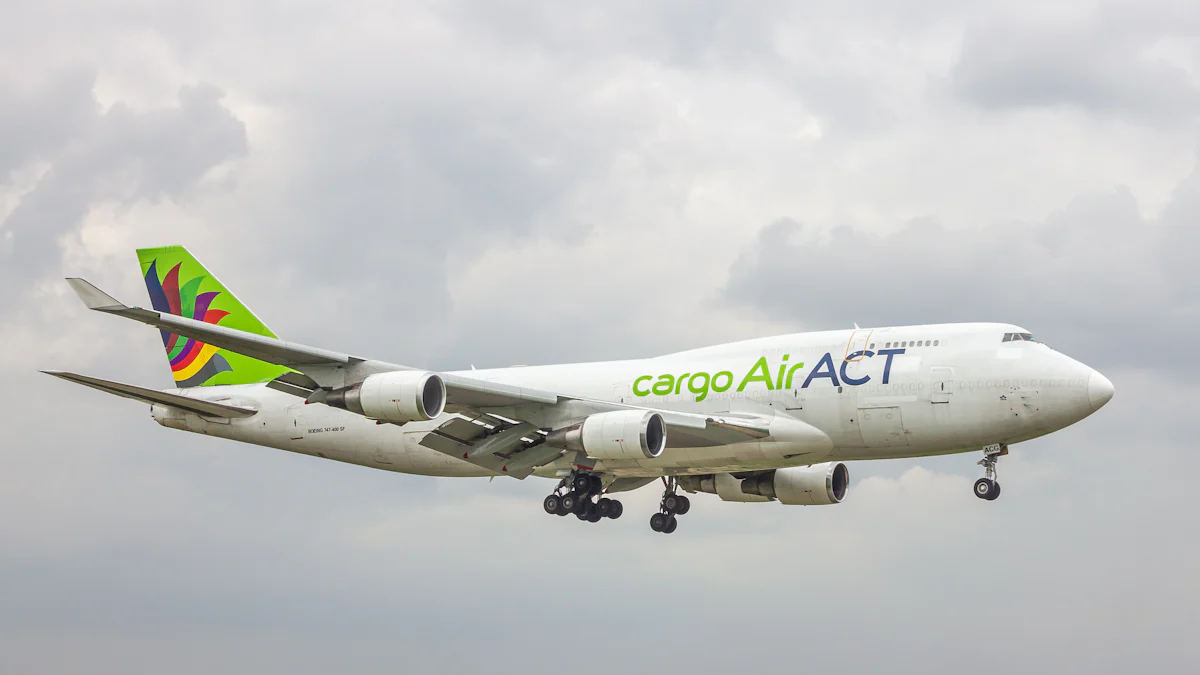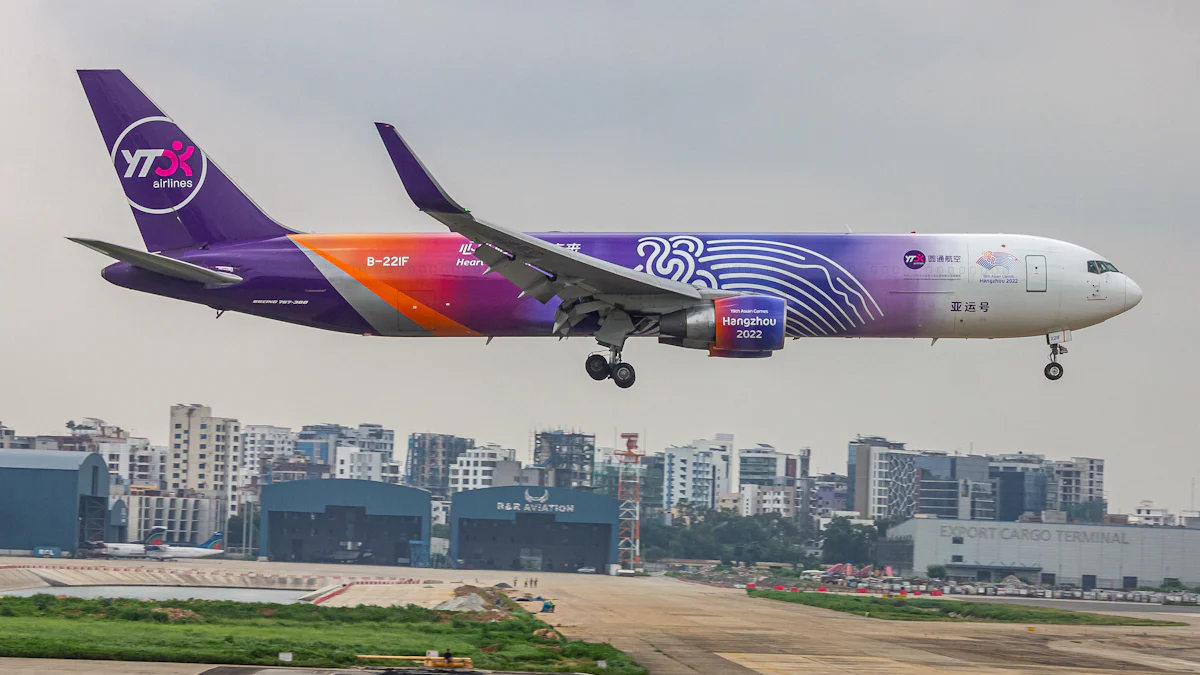
Air freight offers a quick and reliable way to transport goods across the globe. However, not everything can be shipped this way. Certain restricted items are prohibited due to safety risks, legal regulations, or environmental concerns. Shipping these items without proper knowledge can lead to severe consequences. You must understand these restrictions to ensure compliance and avoid unnecessary complications. By staying informed, you protect yourself and others while maintaining smooth shipping operations.
Key Takeaways
- Understand the categories of restricted items, including flammable materials, explosives, and hazardous chemicals, to ensure safe shipping.
- Always check air freight regulations and product labels to identify whether an item is restricted before shipping.
- Consult experts or freight forwarders for guidance on shipping restricted items to avoid legal penalties and safety risks.
- Use proper packaging and labeling to comply with regulations and protect your shipment during transit.
- Stay informed about updates in air freight regulations to prevent shipping prohibited goods and ensure smooth operations.
- Partner with reputable carriers who understand the rules for restricted items to streamline your shipping process.
- Recognize the serious consequences of shipping restricted items, including legal penalties, safety risks, and financial losses.
Categories of Restricted Items

Understanding the categories of restricted items is crucial for safe and compliant air freight shipping. These items pose risks to safety, security, and the environment. Below are some of the most common categories you need to be aware of.
Flammable and Combustible Materials
Flammable and combustible materials are among the most strictly regulated items in air freight. These include substances like gasoline, kerosene, and alcohol-based products. Even everyday items such as nail polish remover or certain cleaning agents fall into this category. These materials can ignite easily under certain conditions, creating a significant safety hazard during transport. Always check the product's label and shipping guidelines to determine if it qualifies as a restricted item.
Explosives and Fireworks
Explosives and fireworks are completely prohibited in air freight. This category includes ammunition, detonators, and any item designed to explode or cause combustion. The risks associated with these items are too high for air transport. Attempting to ship them without authorization can lead to severe legal consequences. If you deal with such items, consider alternative shipping methods that comply with regulations.
Gases and Pressurized Containers
Gases and pressurized containers, such as oxygen tanks, aerosol sprays, and liquid petroleum gas (LPG), are also restricted items. These items can expand or rupture due to changes in air pressure during flight. For example, aerosol cans containing deodorant or paint are not allowed in air freight. Always consult air freight regulations to confirm whether an item falls under this category.
Hazardous Chemicals and Substances
Hazardous chemicals and substances pose significant risks during air freight. These materials can harm people, damage property, or negatively impact the environment. Items in this category include strong acids, bases, and other corrosive substances. For example, sulfuric acid, commonly used in industrial applications, is a restricted item. Radioactive materials, such as those used in medical or scientific equipment, also fall under this classification. Shipping these items requires strict adherence to safety protocols and regulatory guidelines.
You must identify hazardous chemicals before shipping. Look for warning labels or hazard symbols on the packaging. These symbols often indicate flammability, toxicity, or corrosiveness. If you are unsure, consult the Material Safety Data Sheet (MSDS) for the product. This document provides detailed information about the chemical's properties and handling requirements. Always verify whether the item complies with air freight regulations to avoid penalties or safety risks.
Other Restricted Items
Some restricted items do not fit neatly into specific categories but are still prohibited for air freight. These include live animals, human remains, and perishable goods like fresh produce or seafood. Shipping these items often requires specialized carriers or alternative transportation methods. For example, live animals need climate-controlled environments and proper care, which standard air freight cannot provide.
Certain valuables, such as cash, industrial diamonds, and ivory, are also restricted. These items face high risks of theft or legal complications. Additionally, magnetized materials, like large speakers or industrial magnets, can interfere with aircraft navigation systems. You should always check with your carrier to confirm whether an item is restricted. This step ensures compliance and prevents delays or fines.
Reasons for Restrictions
Understanding why certain items face restrictions in air freight helps you make informed decisions. These restrictions exist to ensure safety, comply with laws, and protect the environment. Below are the primary reasons behind these limitations.
Safety Concerns
Safety remains the top priority in air freight. Many restricted items pose significant risks during transport. For example, flammable materials can ignite under high temperatures or pressure changes. Explosives and pressurized containers may cause catastrophic accidents if mishandled. Hazardous chemicals, such as corrosive substances, can harm people and damage aircraft systems. By prohibiting these items, air freight regulations aim to prevent accidents and protect everyone involved in the shipping process.
Regulatory Compliance
Governments and international organizations enforce strict rules for air freight. These regulations ensure that shipping practices align with legal and safety standards. For instance, the International Air Transport Association (IATA) provides guidelines for handling dangerous goods. Shipping restricted items without following these rules can lead to severe penalties, including fines or shipment confiscation. Staying compliant with these regulations helps you avoid legal issues and ensures smooth operations.
Environmental and Ethical Considerations
Some restrictions exist to protect the environment and uphold ethical standards. Items like radioactive materials or hazardous waste can cause long-term environmental damage if improperly handled. Shipping live animals or certain animal products often raises ethical concerns. For example, transporting ivory contributes to illegal wildlife trade, which harms endangered species. By adhering to these restrictions, you contribute to environmental preservation and ethical business practices.
How to Identify Restricted Items
Identifying restricted items is a critical step in ensuring safe and compliant air freight shipping. By taking the right measures, you can avoid delays, penalties, or even shipment confiscation. Below are three effective ways to determine whether an item is restricted.
Check Air Freight Regulations
Air freight regulations provide clear guidelines on what can and cannot be shipped. You should review these rules before preparing your shipment. Organizations like the International Air Transport Association (IATA) publish detailed lists of restricted items. These lists often include categories such as flammable materials, hazardous chemicals, and pressurized containers. Airlines may also have their own specific restrictions, so always verify with your chosen carrier.
You can access these regulations online or through official documentation provided by freight companies. Pay close attention to any updates, as rules may change over time. Staying informed helps you avoid shipping prohibited goods and ensures compliance with safety standards.
Use Shipping Labels and Documentation
Shipping labels and product documentation often contain valuable information about an item’s classification. Look for hazard symbols, warning labels, or specific instructions on the packaging. These indicators can help you identify whether an item falls under the restricted category. For example, flammable liquids usually display a flame symbol, while corrosive substances may show an icon of a chemical spilling onto a surface.
Product manuals or Material Safety Data Sheets (MSDS) also provide detailed descriptions of an item’s properties. These documents outline potential risks and handling requirements. By reviewing this information, you can determine if the item complies with air freight regulations.
Seek Expert Advice
When in doubt, consult an expert. Freight forwarders, shipping agents, or regulatory consultants can provide professional guidance. These experts have extensive knowledge of air freight rules and can help you identify restricted items. They can also assist with proper documentation and packaging to ensure compliance.
Reaching out to experts saves time and reduces the risk of errors. If you frequently ship goods, consider building a relationship with a trusted freight partner. Their expertise can streamline your shipping process and help you avoid costly mistakes.
Consequences of Shipping Restricted Items

Shipping restricted items without proper authorization can lead to serious consequences. These outcomes affect not only your business operations but also the safety of others. Understanding these consequences helps you make informed decisions and avoid unnecessary risks.
Legal Penalties
Shipping restricted items violates air freight regulations, which can result in severe legal penalties. Authorities may impose fines, confiscate your shipment, or even revoke your shipping privileges. In some cases, you could face criminal charges, especially if the violation involves hazardous materials or illegal goods. These penalties damage your reputation and disrupt your business operations. Always review air freight regulations to ensure compliance and avoid legal trouble.
Safety Risks
Restricted items pose significant safety risks during air transport. Flammable materials, for example, can ignite and cause fires. Pressurized containers may rupture due to changes in air pressure, leading to dangerous situations. Hazardous chemicals can leak and harm people or damage aircraft systems. These risks endanger not only the cargo but also the crew and passengers on board. By adhering to shipping guidelines, you help maintain a safe environment for everyone involved.
Financial Losses
Shipping restricted items can lead to substantial financial losses. Confiscated shipments result in lost revenue, while fines and legal fees add to your expenses. Delays caused by non-compliance disrupt your supply chain and harm customer relationships. Additionally, accidents involving restricted items may require you to cover damages or compensate affected parties. Proper planning and compliance with regulations protect your business from these costly setbacks.
Best Practices for Compliance
Ensuring compliance with air freight regulations requires careful planning and attention to detail. By following best practices, you can avoid penalties, reduce risks, and ensure smooth shipping operations. Below are actionable steps to help you stay compliant.
Research and Plan Ahead
Thorough research is the foundation of compliance. Start by reviewing air freight regulations specific to your shipment. Check guidelines provided by organizations like the International Air Transport Association (IATA) and your chosen carrier. These resources outline what items are restricted and how to handle them.
Create a detailed shipping plan before sending your goods. Identify potential challenges, such as packaging requirements or documentation needs. Allocate time to address these issues to prevent last-minute delays. Staying proactive helps you avoid mistakes and ensures your shipment meets all regulatory standards.
Work with Reputable Carriers
Choosing a reliable carrier simplifies the compliance process. Reputable carriers have extensive experience handling air freight and understand the rules for restricted items. They provide clear instructions on packaging, labeling, and documentation. Their expertise reduces the risk of errors and ensures your shipment adheres to regulations.
Before selecting a carrier, research their reputation and track record. Look for customer reviews or testimonials to gauge their reliability. Partnering with a trusted carrier gives you peace of mind and improves the efficiency of your shipping process.
Use Proper Packaging and Labeling
Packaging and labeling play a critical role in compliance. Use materials that meet safety standards and protect your goods during transit. For example, flammable items require specialized containers to prevent leaks or ignition. Ensure the packaging is durable and suitable for air transport conditions.
Label your shipment accurately to indicate its contents and any associated risks. Include hazard symbols, handling instructions, and other required details. Proper labeling helps carriers and authorities identify restricted items and handle them safely. Double-check your labels to ensure they align with air freight regulations.
By following these best practices, you minimize risks and ensure your shipments comply with all necessary guidelines. Taking these steps not only protects your business but also contributes to safer air freight operations.
Shipping restricted items through air freight can create serious challenges. You must understand which items are prohibited and why these rules exist. This knowledge helps you avoid legal issues and ensures the safety of everyone involved. Following compliance measures, such as proper labeling and working with reliable carriers, simplifies the process. By adopting best practices, you protect your business from penalties and maintain smooth shipping operations. Staying informed and proactive ensures your shipments meet all regulations while minimizing risks.
FAQ
What are the most common restricted items in air freight?
The most common restricted items include flammable materials, explosives, pressurized containers, and hazardous chemicals. Everyday items like aerosol sprays, nail polish remover, and certain cleaning agents also fall under this category. Additionally, valuables such as cash, industrial diamonds, and ivory are often prohibited.
Can I ship lithium batteries via air freight?
You can ship lithium batteries only if they meet specific regulations. Batteries contained within equipment are generally allowed, but loose lithium batteries are prohibited due to their fire hazard. Always check with your carrier for detailed guidelines before shipping.
Are live animals allowed in air freight?
Standard air freight does not permit live animals. Transporting animals requires specialized carriers that provide climate-controlled environments and proper care. You should consult with a logistics expert to explore alternative shipping options for live animals.
Why are aerosol cans restricted in air freight?
Aerosol cans are restricted because they contain pressurized gases. Changes in air pressure during flight can cause these cans to expand or rupture, posing safety risks. Items like deodorant, paint, and shaving cream fall under this restriction.
How can I determine if my item is restricted?
You can determine if your item is restricted by reviewing air freight regulations, checking product labels for hazard symbols, or consulting the Material Safety Data Sheet (MSDS). Seeking advice from a freight expert can also help you identify restricted items.
What happens if I accidentally ship a restricted item?
Shipping a restricted item without authorization can lead to serious consequences. Authorities may confiscate your shipment, impose fines, or revoke your shipping privileges. In severe cases, you could face legal action. Always verify your shipment's compliance before sending it.
Are there exceptions for shipping hazardous materials?
Some hazardous materials may qualify for shipping under strict conditions. These exceptions require special packaging, labeling, and documentation. You must work with a certified carrier and follow all regulatory guidelines to ensure compliance.
Can I ship perishable goods through air freight?
Perishable goods like fresh produce or seafood are generally restricted in standard air freight. Specialized carriers with temperature-controlled facilities are required for these items. Always confirm with your carrier before shipping perishable goods.
Do all airlines follow the same restrictions?
Not all airlines follow the same restrictions. While international regulations like those from the International Air Transport Association (IATA) apply broadly, individual airlines may have additional rules. Always check with your chosen carrier for specific requirements.
How can I ensure compliance with air freight regulations?
You can ensure compliance by researching regulations, using proper packaging and labeling, and working with reputable carriers. Consulting experts or freight forwarders can also help you navigate complex rules and avoid costly mistakes.
Table of Contents
- Key Takeaways
- Categories of Restricted Items
- Reasons for Restrictions
- How to Identify Restricted Items
- Consequences of Shipping Restricted Items
- Best Practices for Compliance
-
FAQ
- What are the most common restricted items in air freight?
- Can I ship lithium batteries via air freight?
- Are live animals allowed in air freight?
- Why are aerosol cans restricted in air freight?
- How can I determine if my item is restricted?
- What happens if I accidentally ship a restricted item?
- Are there exceptions for shipping hazardous materials?
- Can I ship perishable goods through air freight?
- Do all airlines follow the same restrictions?
- How can I ensure compliance with air freight regulations?

